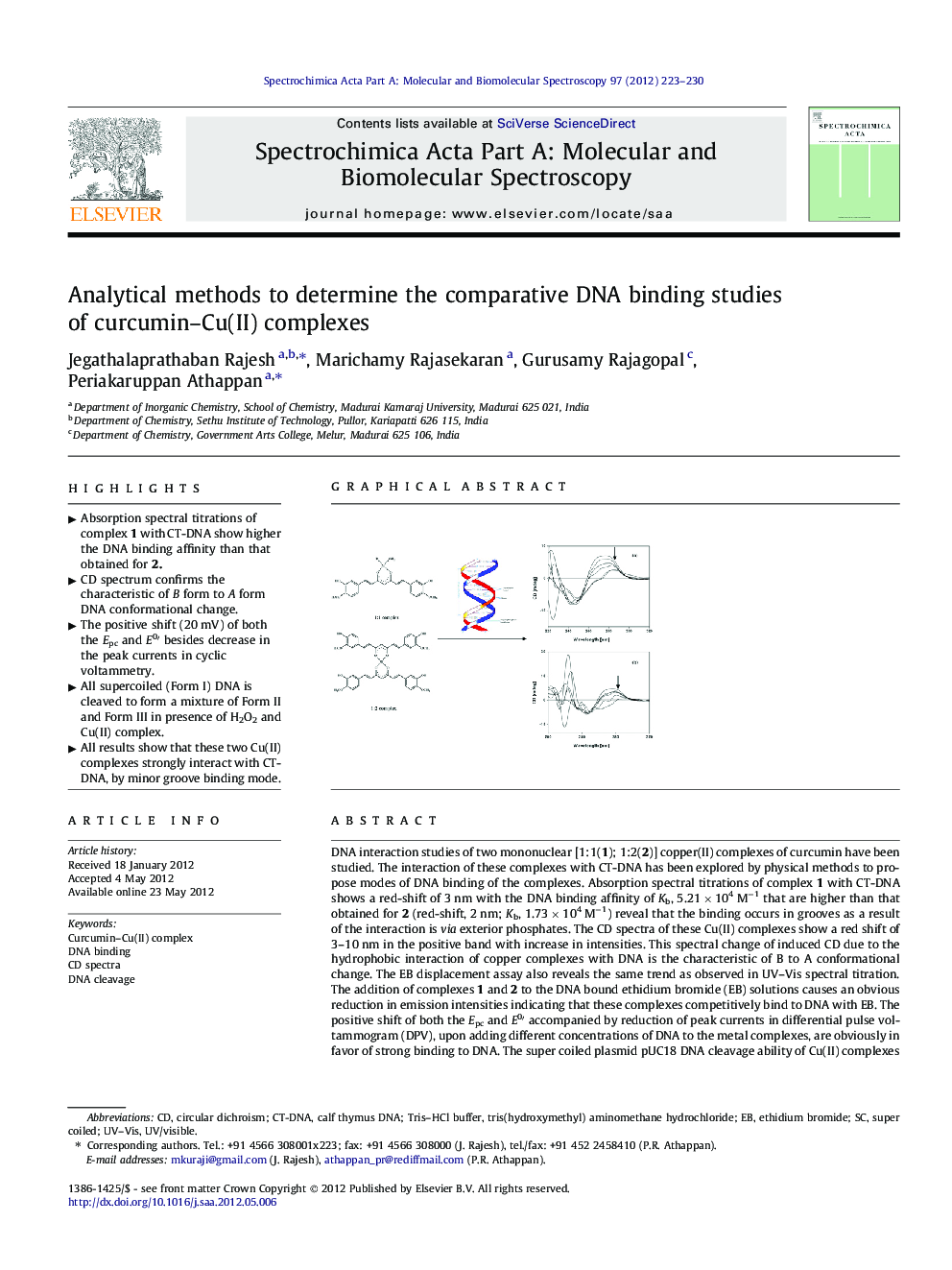| Article ID | Journal | Published Year | Pages | File Type |
|---|---|---|---|---|
| 1232305 | Spectrochimica Acta Part A: Molecular and Biomolecular Spectroscopy | 2012 | 8 Pages |
DNA interaction studies of two mononuclear [1:1(1); 1:2(2)] copper(II) complexes of curcumin have been studied. The interaction of these complexes with CT-DNA has been explored by physical methods to propose modes of DNA binding of the complexes. Absorption spectral titrations of complex 1 with CT-DNA shows a red-shift of 3 nm with the DNA binding affinity of Kb, 5.21 × 104 M−1 that are higher than that obtained for 2 (red-shift, 2 nm; Kb, 1.73 × 104 M−1) reveal that the binding occurs in grooves as a result of the interaction is via exterior phosphates. The CD spectra of these Cu(II) complexes show a red shift of 3–10 nm in the positive band with increase in intensities. This spectral change of induced CD due to the hydrophobic interaction of copper complexes with DNA is the characteristic of B to A conformational change. The EB displacement assay also reveals the same trend as observed in UV–Vis spectral titration. The addition of complexes 1 and 2 to the DNA bound ethidium bromide (EB) solutions causes an obvious reduction in emission intensities indicating that these complexes competitively bind to DNA with EB. The positive shift of both the Epc and E0′ accompanied by reduction of peak currents in differential pulse voltammogram (DPV), upon adding different concentrations of DNA to the metal complexes, are obviously in favor of strong binding to DNA. The super coiled plasmid pUC18 DNA cleavage ability of Cu(II) complexes in the presence of reducing agent reveals the single strand DNA cleavage (ssDNA) is observed. The hydroxyl radical (HO) and the singlet oxygen are believed to be the reactive species responsible for the cleavage.
Graphical abstractFigure optionsDownload full-size imageDownload as PowerPoint slideHighlights► Absorption spectral titrations of complex 1 with CT-DNA show higher the DNA binding affinity than that obtained for 2. ► CD spectrum confirms the characteristic of B form to A form DNA conformational change. ► The positive shift (20 mV) of both the Epc and E0′ besides decrease in the peak currents in cyclic voltammetry. ► All supercoiled (Form I) DNA is cleaved to form a mixture of Form II and Form III in presence of H2O2 and Cu(II) complex. ► All results show that these two Cu(II) complexes strongly interact with CT-DNA, by minor groove binding mode.
